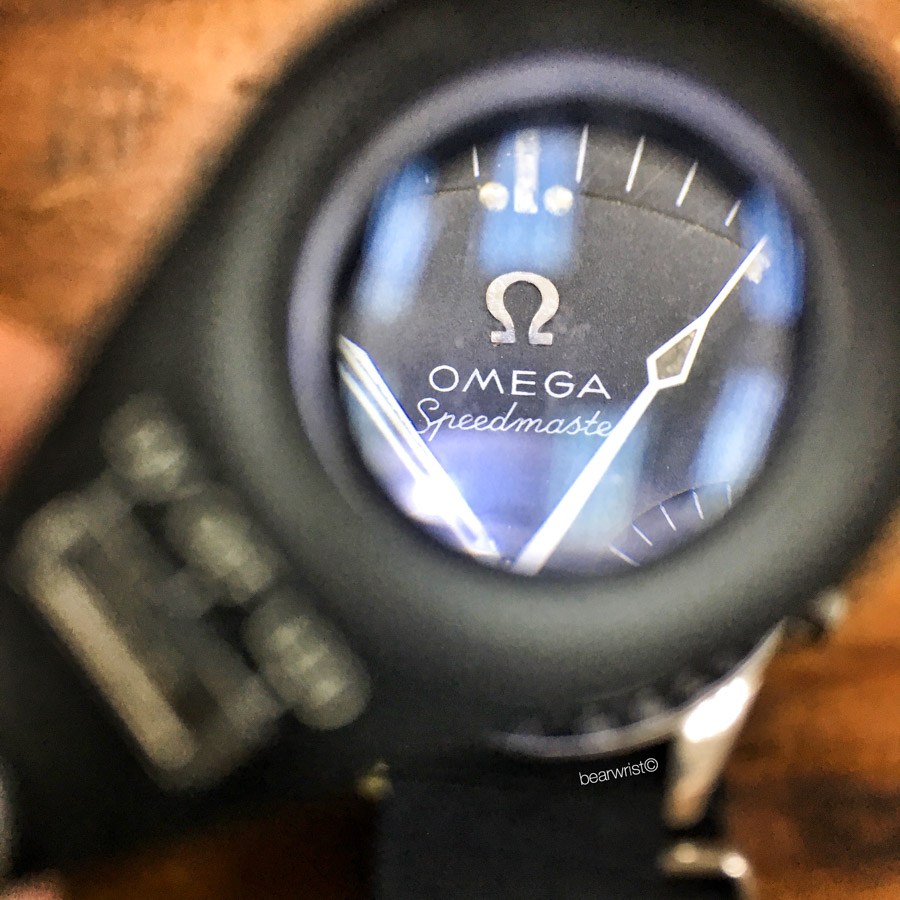
2017 marked the 60th Anniversary of the Omega Speedmaster, one of the most recognizable and popular watches and one that is also known as the “Moonwatch” by watch collectors and enthusiasts. Being a NASA certified instrument for all manned space missions won’t in itself suffice for a lasting success as that of the “Speedy.” No, it also took the Speedmaster’s evergreen and balanced aesthetic, highly comfortable fit, and excellent reliability. Throughout the years, we have seen the Speedmaster mature from tool watch to luxury timepiece. While among the most iconic pieces from major brands, it still remains as one of the most affordable.
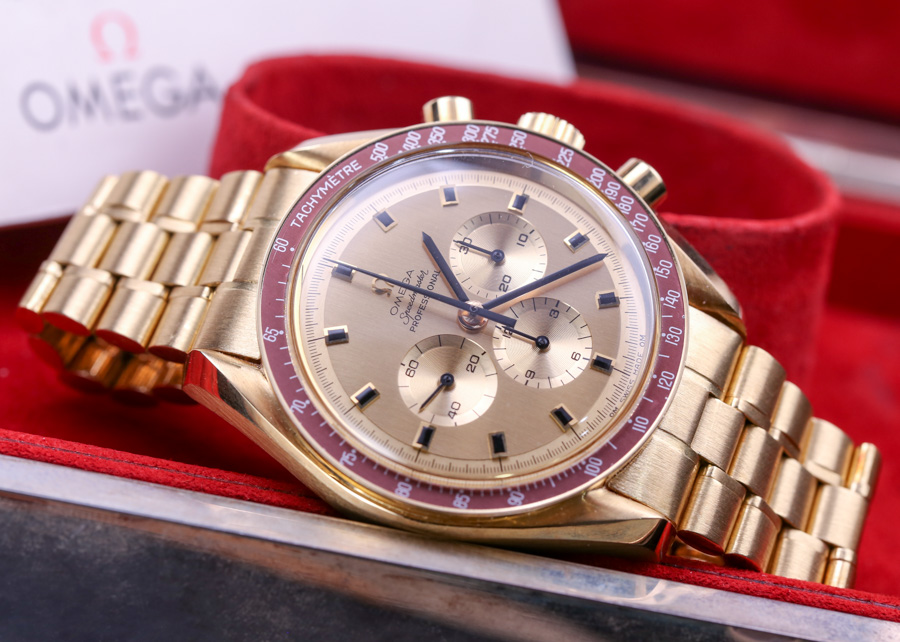
Today, we are setting off on a course that will help us discover a few prominent production pieces and, with them, some fascinating chapters in Speedmaster history. Not trying to create a definitive guide here by any stretch of the imagination, just enough to help you converse with other Speedy fans and discover more of the near-infinite number of minute details the Moonwatch took on over its last 60 years.

The fascination of collecting and learning about the Moonwatch comes from individual stories, trivia, history, and minor tweaks of design details, be it a font, bezel print, logo details, hands, or other stuff only those bitten hard by the Speedy-bug can appreciate. For a lot of us, the sense of satisfaction steps in when you are able to hold a conversation with other collectors, or when you become the expert at a birthday dinner, who can articulate further details on how a timepiece, so often overlooked, played a prominent role in some of NASA’s most challenging projects.
Coming up are our top choices of three iconic Speedmaster references, sort of an extension to this incredible selection of quint-essential Speedmasters by our David Bredan. But, we would love to hear what your favorite reference, further knowledge, or piece of trivia is, because we’d love to consider them for future articles. Be it a limited or special edition, or merely one of the references from the core collection, we know these few are everything but inclusive of all the Speedmaster has in store. Anyhow, let’s get started with these “Ultimate Ice Breakers For Your Next Watch GTG!”
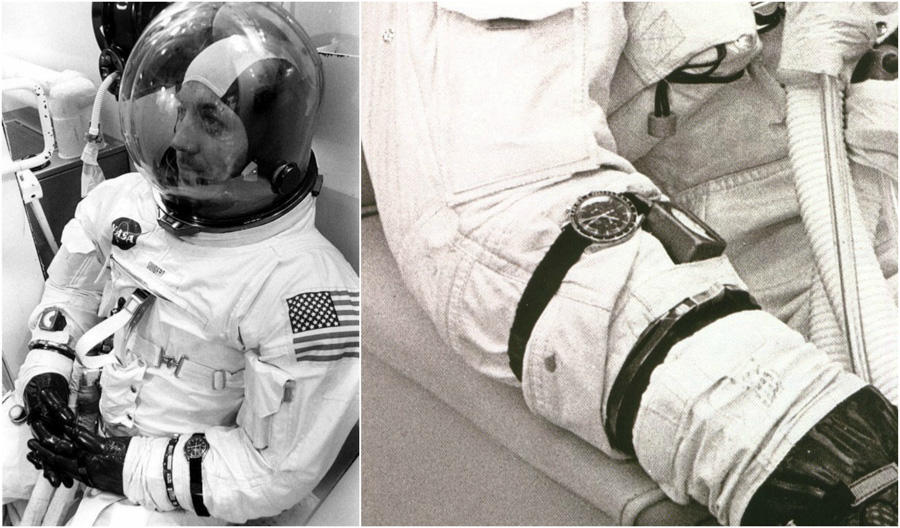
Apollo 13 crew member Jack Swigert with the Omega Speedmaster strapped to his space suit. Source: NASA
Let us begin with some quick basics about vintage Speedmasters:
- The Speedmaster was introduced in 1957 as a sports chronograph to strengthen Omega’s positioning as the Official Timekeeper of the Olympic Games.
- The name ‘Speedmaster’ was derived from Omega’s model naming convention, in line with the ‘Seamaster’ and ‘Railmaster.’ ‘Speed’ was chosen for its tachymeter…
- The tachymeter scale of the Speedmaster is the first to ever appear on the bezel of any watch in the world.
- The applied metal Omega logo can only be found on a handful of early Speedmaster references produced between 1957-1968, fitted with a cal. 321 movement – except for the 145.022 transitional model – you can read more about it here.
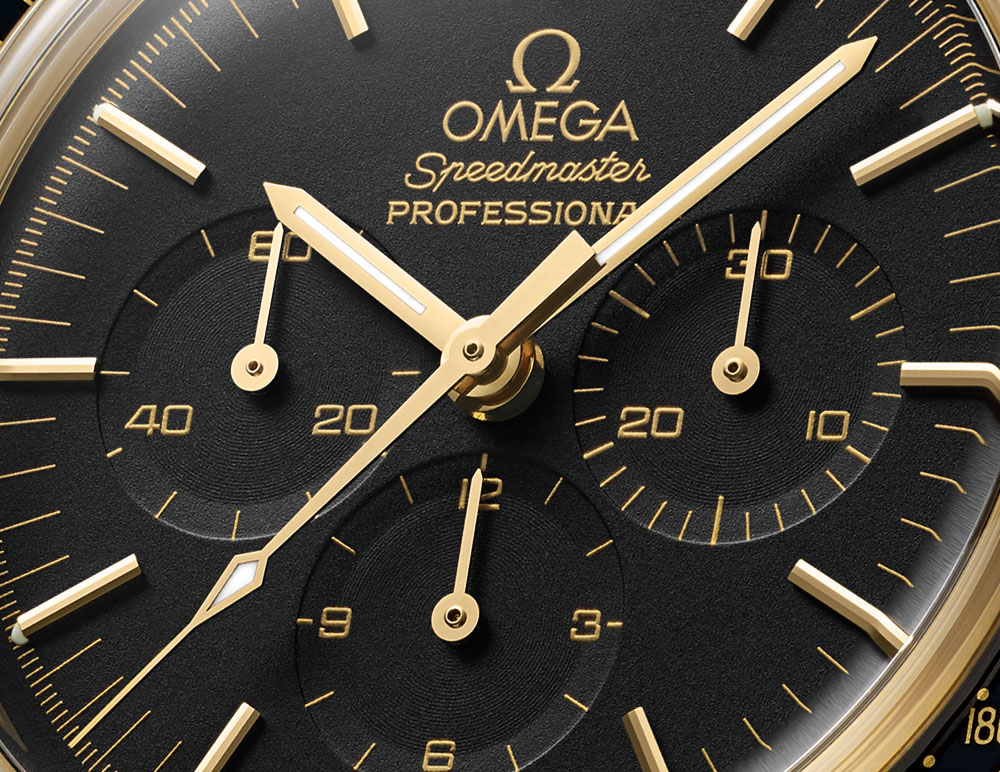
- The “Professional” wording did not officially appear on Speedmaster dials until 1964, but…
- …Contrary to common belief, the Professional marking on the dial has nothing to do with the 105.003 passing NASA’s tests and had already been and would have been present regardless.
- Speedmasters made before 1966 have no crown guards.
- The use of the printed logos began in 1969. It also marked the discontinuation of the famed movement Cal. 321, replaced by Cal. 861, a movement that served as a base for the 1861 that is still in use today.
- The Omega Speedmaster wasn’t the first watch in space, but the first worn on the moon, on the wrist of Buzz Aldrin on July 21st 1969. Neil Armstrong had left his Speedmaster in the Lunar Module as a back-up for the onboard timekeeping system.
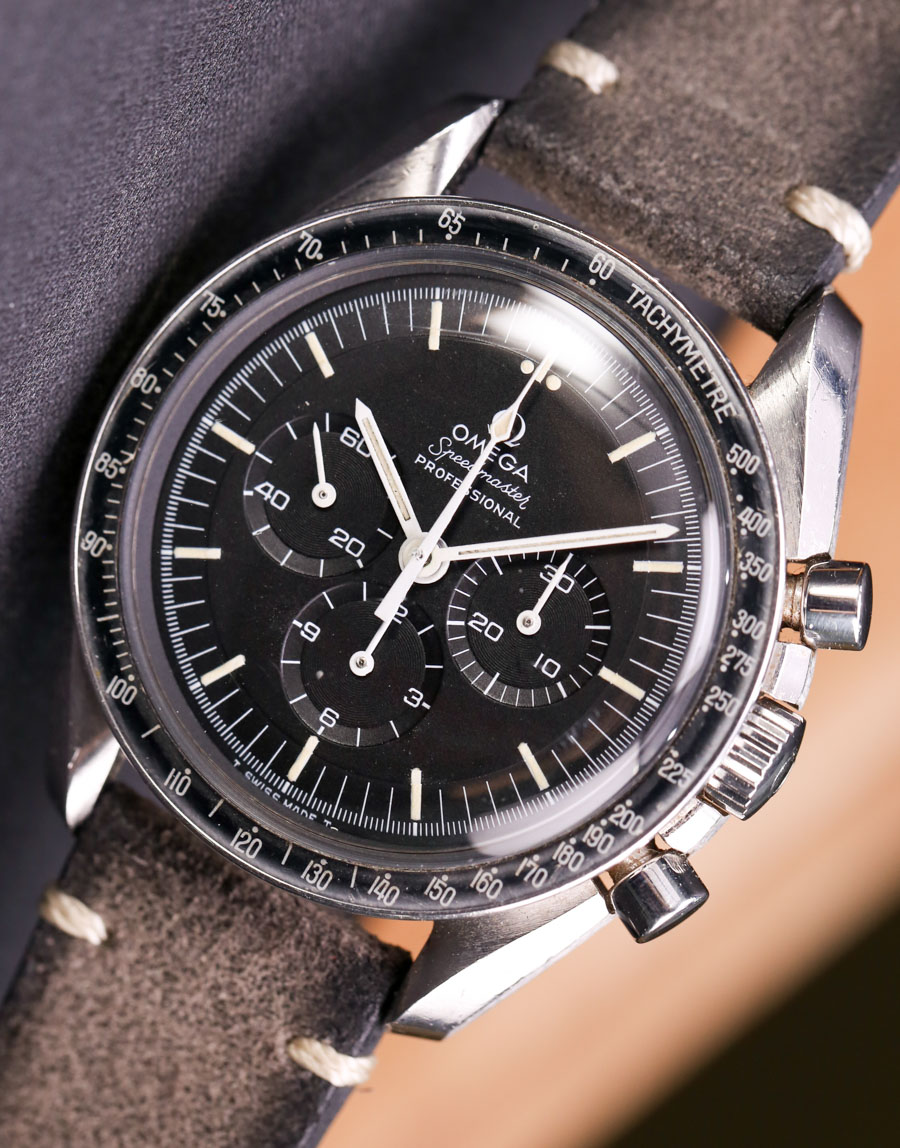
Omega Speedmaster ST145.022-69 (1969)
While looking almost identical to the modern 3570.50 Speedmaster Professional, being able to tell the subtle differences of the modern Speedy from the first generation is always handy. The 145.022-69 is the most classic and sought-after reference among the 145.022 family of Speedmasters, having only been in production between 1968 and 1970.
A new movement called Caliber 861 had replaced the older Cal. 321, providing better accuracy with a more simple, non-column wheel layout, hence decreasing manufacturing costs. Thus, the 145.022 is also considered a sweet entry level vintage Speedy because it is not as rare and costly as the pre-1969 models, while sharing some common vintage features, i.e. the ‘pie pan’ dial and dropped ‘R’ font found on the Speedmaster wordings. The main difference lies in the white printed Omega logo, with an applied metal logo used on older models.
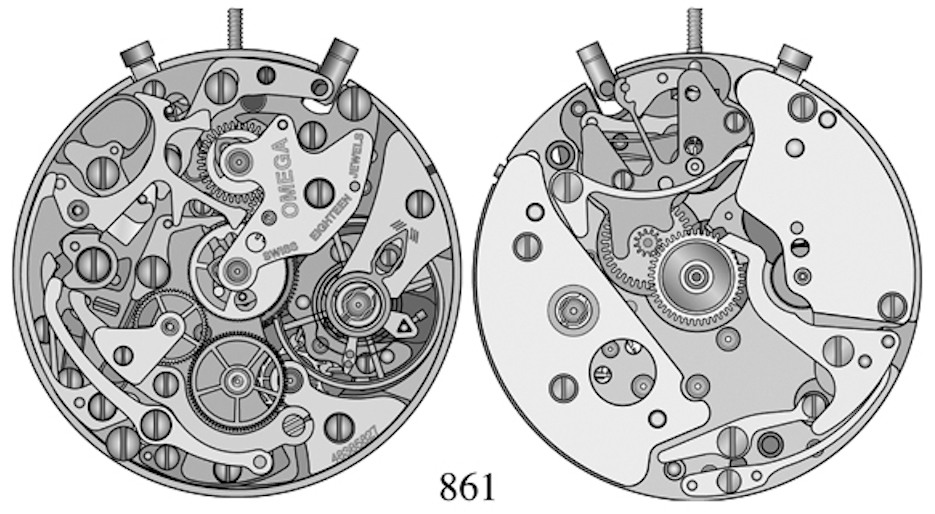

Omega Caliber 861 technical drawing and the four case-back options for the ST145.022-69. Via: Omega, Moonwatch Only, Fratellowatches, Watchuseek, and Dreamchrono.
The 145.022-69 came with four case-back variations, which also differ in rarity significantly – it really seems as though consistency and production optimization were not key concerns in the mid-1900s watch industry. But hey, that just leaves us with more collectibles to pursue, against some of the rather clinically perfect modern iterations.
Would you agree modern brands should also be making a few more “mistakes?” Anyhow, most ST145.022 case-backs have “First Watch Worn On The Moon” engraved, as it was the first Speedmaster upgrade after the lunar landing. Those with a circular engraving can be commonly seen, as they are also featured on the modern models, followed by the seahorse case-back. The rare birds come with a horizontal engraving in the center, with the one featuring “Apollo XI 1969” being the rarest.
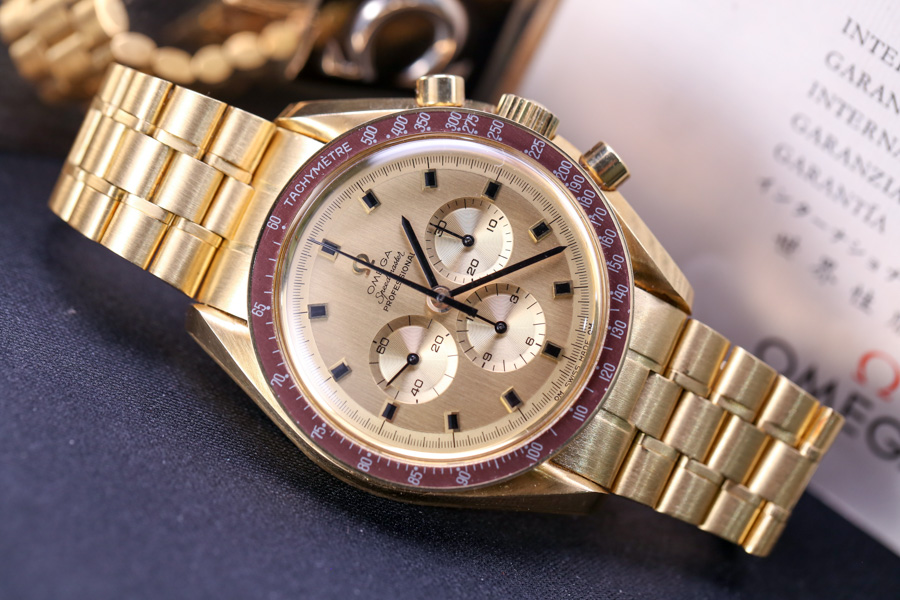
The Full 18K Gold Omega Speedmaster Limited Edition BA 145.022 (1969)
When it comes to old-school, full-gold prestige, nothing can touch the Moonwatch “Big Gun,” the BA145.022. It is the first, and also one of the only two, full 18k gold Speedmaster references released by Omega. This 1969 commemorative model was launched the same year when the Eagle landed on the moon – certainly one of the greatest achievements of mankind. Only 1,014 were made and 38 of them were given out to VVIPs, including President Nixon, Vice President Agnew, and NASA astronauts and staff who contributed to the mission. If the gold case, bracelet, and dial weren’t enough, the Omega Speedmaster BA145.022 can also be easily recognized by its exclusive burgundy tachymeter too!
